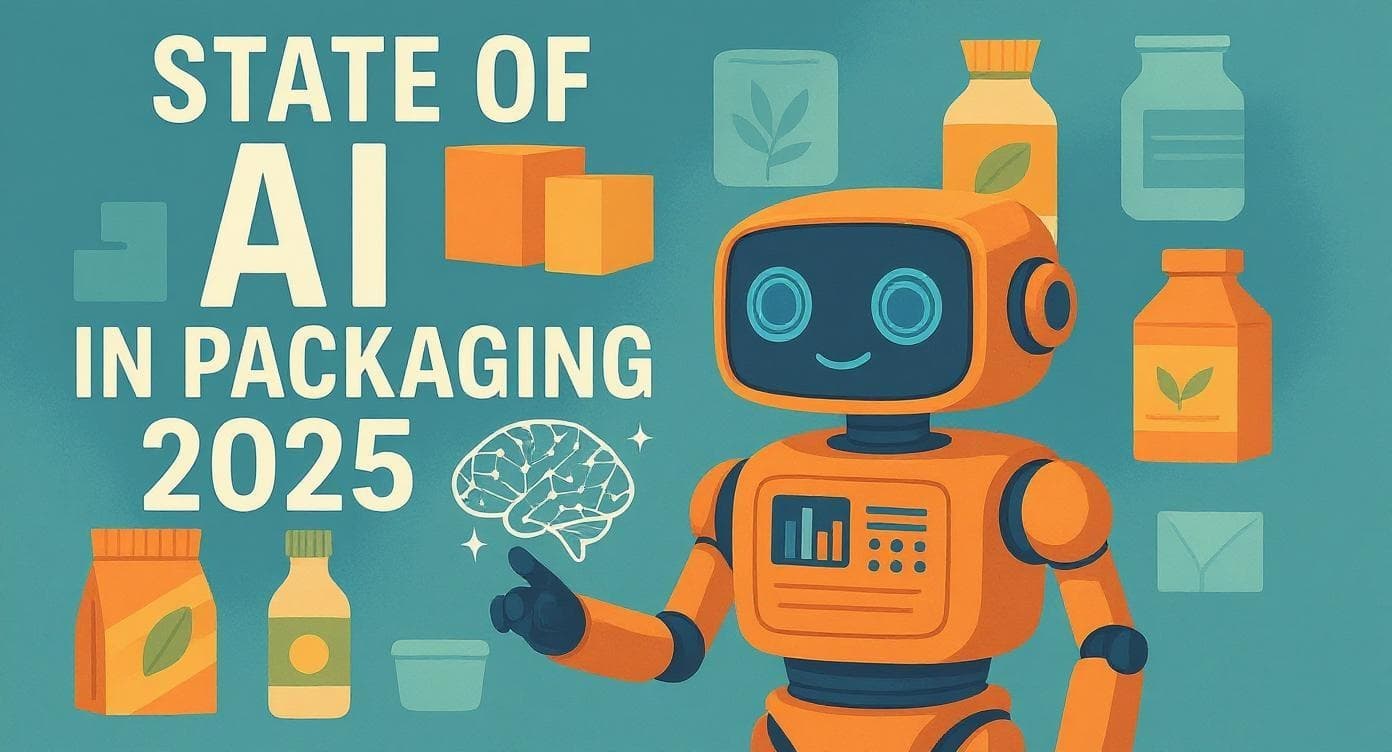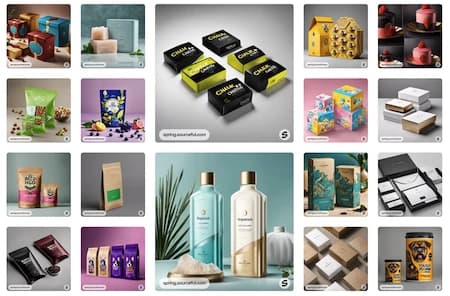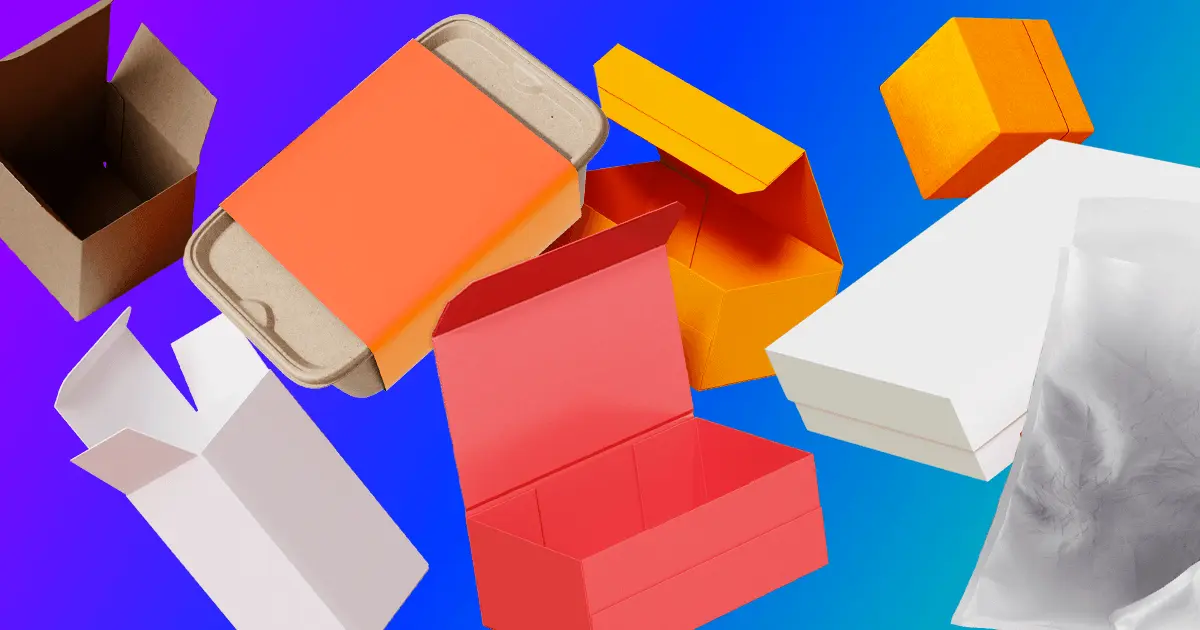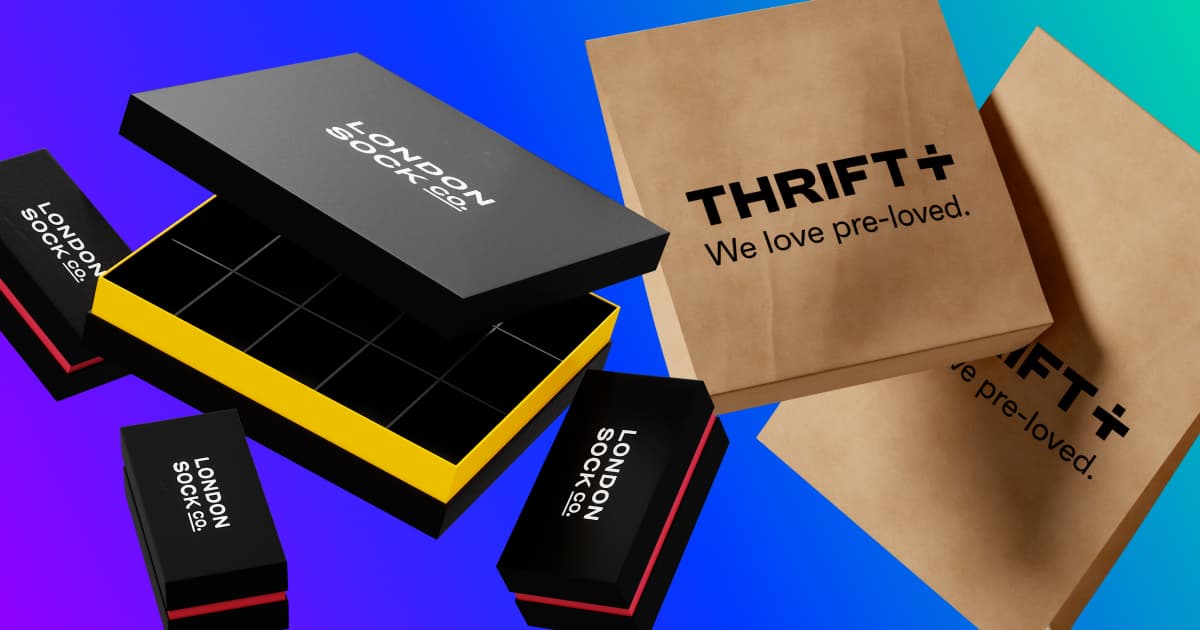Blog PostPaper vs. plastic: which is better packaging for your brand?
- Sustainability
- Materials
- Design
Bryony CarragherJune 16, 2023 - 7 min read

If you find the paper vs. plastic debate confusing, you’re not alone. From how much energy is used in manufacturing to the difference in recyclability, there’s a lot of conflicting information out there. All whilst you’re trying to strike the balance between sustainability and your bottom line.
But armed with the right information, you can settle the paper vs. plastic debate once and for all.
Paper vs. plastic: Which is more sustainable?
74% of paper is recycled in the UK, compared to just 6% of flexible plastic. And sourcing paper from responsibly managed forests is less harmful (environmentally and socially) than extracting the oil needed to make plastic. Although paper does release some methane when breaking down, it breaks down completely in weeks. On the flip side, plastic hangs around for hundreds of years and leaves harmful chemicals behind.
As the debate heats up you’ll need to weigh up these pros and cons so you can make the best decision for your business.
Paper overview
Pros of paper
1: Recyclability
Paper is the most recycled packaging material in the UK, with a recycling rate of 74%. That’s a stark contrast to plastic, where only 6% of flexible plastic is recycled. That includes things like plastic films, bags and wraps; pretty much anything you can scrunch. And the story’s even worse in the US: only 5-6% of total plastic waste is recycled there.
Paper isn’t infinitely recyclable. But a single paper product can be recycled several times before losing its original quality. This reduces the pressure on forests as fewer virgin materials are needed to create new products.
And that’s not all. The fact that paper is so easily recyclable means less of it goes to landfill. Landfill waste is notorious for releasing methane, a greenhouse gas thirty-four times more harmful to the climate than carbon dioxide. So, by choosing paper, you’re also diverting waste away from landfill.
“Recycling one tonne of paper can save 17 trees, 7000 gallons of water, 3 cubic yards of landfill space, and 60 pounds of air pollutants.” — Massachusetts Institute of Technology
2. Responsible sourcing
Responsible forestry is real. And it’s surprisingly common. What’s more, sourcing paper from responsibly managed forests has nowhere near the harmful impact that oil extraction for plastic has.
For starters, trees store carbon as part of the short carbon cycle, which can help tackle climate change. Now you would be cutting the trees down to make paper. But because paper is so widely recycled, the carbon stored in paper is kept out of the atmosphere for longer than if, for example, trees were left to rot. In other words, it’ll mostly get put back into new products for as long as it continues to be recycled.
But responsible is the key word here. Because cutting down trees must be done with the wider picture in mind. This means securing the longer-term integrity of the forest and staying clear of ancient or endangered forest.
So when choosing paper as a packaging material, look for certifiers like the Forest Stewardship Council (FSC). An FSC label on your packaging is proof of your responsible sourcing efforts and shows climate-conscious customers that you care.
By choosing paper from these types of forests, you're supporting responsible practices and promoting better industry standards. With plastic, this isn't possible.
3. An established supply chain
Despite the rise of digitisation, paper packaging isn't going anywhere. Paper is part of an established industry that's been around for centuries. Because of this, it's widely available. And this also makes it one of the cheapest options out there. It can also be cheaper than some novel alternatives that don't necessarily deliver more impact.
Plastic, however, doesn’t have the same supply chain security as paper. One reason is plastic’s dependency on fossil fuels, which means as a packaging material it’s highly vulnerable to fluctuations in oil prices as well as geopolitical issues. And as the world continues to learn about plastic pollution, governments are bringing in new regulations against production and usage. In turn, this is also disrupting the plastic supply chain.
When it comes to reliability and deliverability, paper wins this round.
4. Breaks down easily
“Biodegradable” means that a material can be quickly broken down by bacteria or fungus under natural conditions. This includes all organic materials, like food scraps and — you guessed it — paper. Plastic on the other hand is a synthetic material. And unlike paper, it can take hundreds of years to break down, all whilst leaving microplastics behind which are a threat to ecosystems and health.
But biodegrading isn’t the best outcome for paper, or any packaging material really. That’s because whether it’s in landfill, on a compost heap or leaked into the environment, packaging breaks down and releases methane. Recycling is always the better option.
In the unfortunate event that your paper packaging doesn’t get recycled, at least its environmental impact will be less than that of plastic. Another point for paper.
Cons of paper
1. Barrier properties
If you’re using paper as your packaging material, its barrier properties are something you need to think about.
Paper isn’t water-resistant and air can flow through it. Of course, this isn’t a problem for all products. But it could affect those that must stay fresh or protected from external factors. Another caveat is that paper packaging is more easily damaged by moisture or humidity than plastic, which might affect your product’s quality or safety.
Luckily, there are ways to work around these limitations. For example, paper packaging can be coated or lined with other materials to improve its barrier properties. And these linings don’t have to be plastic or contain toxic chemicals. In fact, our HydroTec Paper Pouch has a water-based lining and keeps products fresh for up to 18 months (if you can resist the contents for that long).
These new developments mean even fewer reasons not to switch to paper packaging.
2. Energy efficiency
When it comes to paper manufacturing, the energy needed does indeed result in greenhouse gas emissions and other environmental impacts. But the good news is that the paper industry is becoming more energy efficient. Take the UK’s UPM Shotton paper mill, which runs on 100% solar energy during daytime hours.
Another way to reduce energy usage is to use recycled paper in your packaging. Compared with virgin paper, producing recycled paper uses anywhere between 28% and 70% less energy, as well as less water.
So, whilst energy efficiency has traditionally been a concern, progress in paper production is being made. Whereas plastic production still requires a lot of energy.
3. Can contain synthetic components
Paper isn’t resistant to moisture. So, until now, you’d need to line any liquid or oily product’s packaging with something extra. And that’s where PFAS came in.
Per- and poly-fluoroalkyl substances (PFAS) are used to make paper products water and oil-resistant. But they come with a range of health and environmental concerns. In fact, you might know them under their more common name — forever chemicals.
Thanks to better technology, it is possible to limit or avoid the use of PFAS completely. But many suppliers aren’t doing this, so you’ll still see a lot of PFAS-lined products on the market. And PFAS aren’t the only problem. Because producing paper can involve other toxic chemicals like bleach and dyes.
So does that mean giving up on paper? Thankfully, no. Instead, you can limit the use of bleaching and synthetic materials in your paper packaging. To be on the safe side, make sure you work with a reputable supplier that knows their industry and embraces transparency.
Plastic overview
Pros of plastic
1. Recycled content
There’s been a fair bit of innovation in response to the plastic packaging waste crisis. Now, plenty of products do contain some recycled plastic content and stricter regulations mean this is increasing.
But the catch is, no plastic is perfectly recyclable. And the production of plastic packaging still creates a demand for virgin plastic — a finite resource.
So if you have to use plastic packaging, use materials with a lot of recycled content. This can reduce the need for virgin plastics as well as your CO2e emissions. In fact, our data shows that recycling just one tonne of plastic can avoid up to 1.4 tonnes of CO2e emissions compared to placing it in general waste. And using recycled content in packaging can reduce whole lifecycle emissions by up to 30% when compared to using virgin plastic.
Remember that not all plastics are created equally. And most don’t get recycled at the same rate as paper. So, pay attention to the specific type of plastic being used and aim for a high level of recycled content.
2. Durability
When it comes to packaging, durability matters. Plastic packaging has a clear advantage in this area. It can withstand multiple uses and exposure to water — ideal for products that need high barriers, protection or waterproofing. In fact, plastic packaging is generally more resistant to damage than paper packaging and is less likely to tear or puncture.
Of course, this all depends on whether your product needs that durability in the first place. Traditional plastic packaging can usually be swapped out for paper packaging that’s just as efficient. For example, clothing will be sufficiently protected by a paper mailer, which can be recycled after use.
So plastic wins on durability. It’s up to you to decide whether that’s a good thing and if you can swap it out for paper packaging instead.
3. Cost-effective
Plastic packaging can be manufactured in large quantities with high-speed processes. That leads to lower production costs and reduces the overall cost of packaging. And plastic typically weighs less than paper too. This can help reduce transportation costs and emissions because you need less fuel to transport the same amount of product.
Of course, the cost savings of plastic packaging come with a huge cost to the environment. Plastic waste and pollution have become a global problem, and businesses must weigh the benefits of cost savings against the potential long-term damage.
If you have to use plastic packaging, make sure it contains recycled content and can be recycled once used.
Cons of plastic
1: High carbon footprint
Plastic’s environmental impact starts at the very beginning: extraction.
Plastic is made from oil — a fossil fuel. At its most basic, oil is just concentrated carbon from plants and animals that lived millions of years ago. To extract oil, you need to burn it. And this burning creates a greenhouse effect around the earth, accelerating global warming.
Then, to produce anything plastic, you need a lot of energy. This process also releases large amounts of greenhouse gases, especially carbon dioxide. And the carbon footprint of plastic doesn't stop there. Because once used, any plastic product that isn’t recycled leaks into the environment or landfills and releases methane.
So choosing plastic packaging means contributing to a colossal carbon footprint and the production of persistent waste. That’s in contrast to paper, which boasts responsible forestry options, better recycling rates and quicker breakdown times.
2. Harmful to the environment
Plastic’s durability can be seen as a strength compared to paper. But in the long term, it’s a major weakness. Plastic waste takes hundreds to thousands of years to degrade, releasing harmful greenhouse gases and contributing to climate change.
And low recycling rates around the world mean that plastic waste is building up in landfills and oceans alarmingly fast. In fact, the current amount of plastic waste in the world is set to triple by 2060.
Why is this a problem? Because animals eat this plastic waste, mistaking it for food. This can build up in their bodies and eventually kill them. Or they can die from entanglement, for example in bags or plastic rings for canned drinks.
Meanwhile, microplastics — manufactured beads or bits of packaging that have broken away — are also increasing. The UN estimates that there are 51 trillion microplastic particles in our seas. That’s 500 times more than stars in the galaxy. These are harmful to tourism and fishing industries, and cause huge damage to marine ecosystems.
So paper wins on the environmental front. Because if it does leak into the environment, at least it breaks down within weeks and doesn’t leave toxic fragments behind.
3. Toxicity
If you go shopping for new plastic Tupperware or a water bottle, you’ll probably see quite a few “BPA-free” labels. That’s because consumers are becoming increasingly aware of a major health hazard that comes with using plastic: its toxicity.
Many types of plastic packaging contain chemicals that can be toxic to humans and the environment. One major one is BPA (bisphenol A), which is commonly used in plastic production. This is a hormone disruptor that interferes with the normal functioning of our bodies. It’s also known to create developmental problems in children.
There are plenty of paper options that come minimally processed (like natural kraft paper) which can still be splashproof and even leak resistant. So there’s really no reason to settle for this kind of toxic plastic packaging anymore.
4. Recycling challenges
Customers are engaging with recycling like never before. But despite this goodwill, recycling plastic packaging comes with its own set of challenges.
Even when plastic is recycled, it’s usually downcycled. This means its quality and usefulness decrease with each recycling cycle. So there’s a limit on the amount of high-quality recycled plastic products, perpetuating the demand for virgin plastics.
Another major issue is that not all plastics are accepted by recycling programs. So they might end up in general waste after all. This includes bioplastics, which need special industrial processes to break down.
It’s easy to hope that recycling will help us out of the plastic packaging waste crisis, but that’s far from the truth. Whilst recycling is important, it's better to reduce your reliance on plastic and use more sustainable materials instead.
5. Bad for business
There’s no doubt that until now, plastic has had some important applications, like keeping food and medicine safe for use. But in today’s story, plastic is becoming the supervillain. And this has implications for business.
Firstly, the public perception of plastic has shifted. Consumers are aware of the negative impact of excessive plastic use and are seeking out brands with a commitment to sustainability. So using plastic packaging can be seen as a lack of responsibility, which can harm your reputation.
Next, there are initiatives like Plastic Packaging Tax as part of new extended producer responsibilities. These aim to reduce single-use plastics and encourage businesses to use more sustainable alternatives. Failure to do so can result in higher costs to your company.
So by embracing more sustainable alternatives, you ensure your business complies with regulations and avoids increased costs. And as a bonus, you get to boost your brand image whilst meeting the demand for more environmentally responsible products.
Which is better for your business?
In the search for more sustainable packaging solutions, one thing is clear: we need to part ways with single-use plastic. It's damaging to the atmosphere, depleting natural (and finite) resources and harming ecosystems.
Now, as a packaging material, paper isn't without its drawbacks. It may be less durable than plastic, and there are certain products it’s not the best choice for. But paper’s recyclability, renewable nature and lower environmental impact make it a better and more sustainable option for many products.
By choosing paper packaging instead of plastic, you can reduce your carbon footprint, contribute to recycling efforts and divert waste from landfills. And for when you really need plastic properties, opt for recycled over virgin plastic. This way, you’ll also be more aligned with the growing consumer demand for more responsible packaging solutions.
More sustainable packaging from Sourceful
Choosing paper over plastic is a chance to showcase your commitment to the environment and set your brand apart from the competition. And at Sourceful, we offer a wide range of paper packaging options to help you make the switch.
From expandable paper mailer bags to custom mailer boxes, you can find what you need with our self-service platform. And if you need something bespoke, our team is on hand to help.








